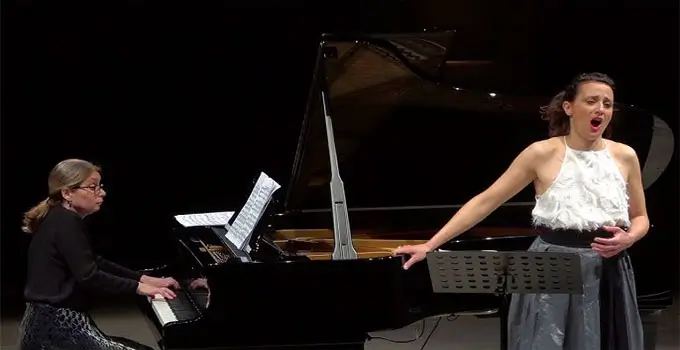How Did German Lieder in Classical Music Change After the First World War?
How Did German Lieder in Classical Music Change After the First World War?

The First World War marked a significant turning point in German culture, with its effects being particularly evident in the classical music genre of the lied. Prior to the war, the Lied, or German art song, was a cornerstone of the Romantic tradition. Composers such as Franz Schubert, Robert Schumann and Hugo Wolf had perfected a form combining beautiful poetry with expressive vocals and an equally important piano accompaniment. This style was characterised by a focus on individual emotion and nature, and often a sense of beauty or longing that went beyond the physical world.
The war, however, shattered this idealistic world. The brutal realities of modern warfare, the huge loss of life and the economic and political chaos that followed the war made the pre-war Romantic aesthetic seem outdated and, indeed, irrelevant. Composers could no longer retreat into lyrical nature or personal sorrow portraits; the collective trauma of a nation demanded a new kind of artistic expression. The post-war lied became a reflection of the disillusionment, fragmentation and psychological complexity of the era.
A Shift from Romanticism to Modernism
The most significant change was moving away from the rich, expansive harmonies of late Romanticism towards more dissonant, often atonal and fragmented musical languages. Smooth, predictable melodic lines were replaced with sharp, unpredictable ones. The rich textures of the piano accompaniment were often stripped back to become more angular and stark. This change was not just a stylistic choice, but a fundamental reaction to the emotional and intellectual instability of the era. The comfortable, familiar structures of the past seemed unable to express the new, uncertain realities.
Arnold Schoenberg was one of the key figures in this transition. Although he had begun composing atonal and twelve-tone pieces before the war, their influence grew exponentially in the 1920s. His Op. 48 Lieder (1933) are a prime example of this change. Rather than flowing melodies, they feature wide, sudden leaps and lack a traditional tonal centre. Schoenberg called this the freedom of dissonance, and it was a clear break from the past, reflecting a world that no longer made sense in traditional terms.
The Influence of Expressionism
Post-war lieder were heavily influenced by expressionism, an artistic movement that focused on expressing intense, subjective emotions and psychological states rather than objective reality. Expressionist composers explored themes of anxiety, isolation, and psychological distress. The poetry chosen for these lieder often reflected these themes, moving away from the idyllic verses of Romanticism towards the works of modern poets who dealt with the dark consequences of the war.
Composers such as Alban Berg and Anton Webern, Schoenberg’s students, applied these principles to the lied. Although Berg’s Sieben frühe Lieder were composed earlier, they were published after the war, and their dark, introspective nature was in line with the new sensibility. Webern’s pieces, including his Fünf Lieder nach Gedichten von Richard Dehmel, Op. 3 (1907–1908), are characterised by extreme precision and the use of silence, with each note carrying significant weight. The emotionally intense, minimalist texture of these pieces speaks to the profound sense of isolation and self-reflection that became commonplace after the war.
A Broader Thematic Scope
The subject matter of the lied expanded dramatically too. While Romantic lieder often focused on nature, love and loneliness in pastoral settings, post-war lieder addressed social critique, psychological distress and urban isolation. Schubert’s idyllic landscapes were replaced with the harsh realities of the city. Composers began setting texts that explored themes such as madness, existential anxiety, and the profound sense of loss experienced by a generation.
A notable example is the work of Hanns Eisler, a former student of Schoenberg who went on to become a prominent composer for the political left. His songs often had a direct, almost propagandistic quality, using popular and folk-inspired tunes to reach a wider audience. Unlike the intimate salon setting of Romantic lieder, Eisler’s songs were intended to be politically engaged and socially meaningful. His move away from the traditional concert hall towards more politically charged music was a direct response to the socio-political changes of the Weimar Republic.
The Rejection of the Grand Style
The post-war period also saw composers rejecting the grand, operatic scale that had begun to creep into the late-Romantic lied. Composers returned to a more intimate, chamber-like style, but with a different sensibility. The focus was on economy of expression — each note and gesture had to matter. This was a direct result of rejecting the dramatic, heroic narratives that had characterised much of the pre-war period, and which were now seen as having led to the catastrophic conflict.
In conclusion, the First World War altered the German Lied permanently. It transitioned from a genre rooted in Romantic idealism to one reflecting the fragmented, dissonant and psychologically complex realities of the Twentieth Century. Lush harmonies were replaced with the sharp edges of modernism, and themes of nature and personal longing gave way to urban isolation and existential fear. Post-war lieder thus became a powerful and enduring testament to the artistic and social transformation of the time, demonstrating that even within the most traditional of forms, artists could find new ways to express the painful truths of their era.


